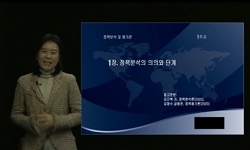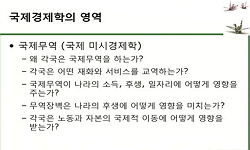One of primary factors that make it difficult to optimize inventory and transportation management in the supply chain is discrepancy between unit of packaging and order quantity. Even though increasing standardization of packaging units matching with ...
http://chineseinput.net/에서 pinyin(병음)방식으로 중국어를 변환할 수 있습니다.
변환된 중국어를 복사하여 사용하시면 됩니다.
- 中文 을 입력하시려면 zhongwen을 입력하시고 space를누르시면됩니다.
- 北京 을 입력하시려면 beijing을 입력하시고 space를 누르시면 됩니다.

자동차 부품물류에서 포장단위와 주문량의 불일치에 따른 비용분석 = Cost Analysis of Discrepancies between Order Quantity and Packing Unit in Automobile Parts Supply
한글로보기https://www.riss.kr/link?id=A105680010
- 저자
- 발행기관
- 학술지명
- 권호사항
-
발행연도
2018
-
작성언어
-
-
주제어
자동차 부품물류 ; 포장단위 ; 주문량 ; 빈공간 비용 ; 비용 분석 ; 공급사슬협력 ; Auto part logistics ; Packing unit ; Order quantity ; Empty space cost ; Cost analysis ; Supply chain collaboration
-
KDC
320
-
등재정보
KCI등재
-
자료형태
학술저널
- 발행기관 URL
-
수록면
11-26(16쪽)
-
KCI 피인용횟수
0
- DOI식별코드
- 제공처
-
0
상세조회 -
0
다운로드
부가정보
다국어 초록 (Multilingual Abstract)
One of primary factors that make it difficult to optimize inventory and transportation management in the supply chain is discrepancy between unit of packaging and order quantity. Even though increasing standardization of packaging units matching with order quantity makes it advantageous to pursue optimization, it discrepancy is likely to exist because buyers hope to order inconsistently depending on their inventory and demand. Collaborative efforts between buyers and suppliers are essential to sort out this problem, but insufficient recognition on cost incurred from discrepancy between packing unit and order quantity hinders the mutual collaboration. While the literature on this issue is very limited, this study develops numerical analysis model to calculate the cost incurred from mismatch between the order quantity and the packaging unit. The model is based on the case study of a Korean auto-part supplier using order data of 9,645 times for 31 weeks received from auto-manufacturer. It is shown that the empty space due to discrepancy between packing unit and order quantity influence transportation cost, packaging cost and tax base that is used for insurance and duty levy. As the cost of empty space is variably allocated to buyers and suppliers depending on incoterms applied, buyers do not have sufficient motivation to improve efficiency in transportation by reducing the empty space and this misperception hinders recognition of the cost from the whole supply chain. This study suggest that full recognition of the cost of the empty space from the whole supply chain’ s perspective will facilitate and motivate collaboration between suppliers and buyers.
국문 초록 (Abstract)
공급사슬에서 재고 효율화와 운송 최적화를 어렵게 하는 요인 가운데 하나가 포장단위와 주문량의 불일치 문제이다. 특히 포장 단위를 표준화할수록 최적화가 용이해지는 반면에 주문량은 ...
공급사슬에서 재고 효율화와 운송 최적화를 어렵게 하는 요인 가운데 하나가 포장단위와 주문량의 불일치 문제이다. 특히 포장 단위를 표준화할수록 최적화가 용이해지는 반면에 주문량은 구매자의 여건에 따라 변동성이 더욱 높아지고 있어서 불일치하게 될가능성이 더욱 높아지고 있다. 이를 해결하기 위한 노력이 필요하지만 이 문제에 대한 인식이 상호 불일치하는 경우가 많아 상호 협력을 통한 최적화가 매우 어려운 실정이다. 이를 분석하기 위한 연구는 매우 제한적으로 이루어져 왔는데, 본 연구에서는 주문 량과 포장단위의 불일치로 인한 비용을 분석하기 위해 수리계산모형을 도출하였다. 실제 자동차부품공급 기업에서 접수한 31주 분의 9,645건의 주문데이터를 기반으로 분석을 수행하였고 공급자와 구매자 사이의 공급사슬 내 각 구간별, 무역조건별 비용분석을 통해 주문량과 포장단위의 불일치로 인한 비용효과를 정량적으로 분석하였다. 본 연구를 통해 포장박스 내부의 빈 공간으로 인해 운송비와 부대비, 포장비뿐만 아니라 보험금액과 관세계산을 위한 과세표준가격에도 영향을 줄 수 있음을 알 수 있었다. 또한 교역조건에 따라 구매자와 공급자의 비용 부담 구간이 달라지므로 구매자와 공급자간 체감하는 포장단위와 주문량의 동기화 효과는 다르다는 것을 알 수 있었다. 그리고 빈 공간으로 인한 비용효과는 EXW, FOB, CFR, DAP 교역조건 순서로 공급자 측에 최대가 되고 구매자 측에는 최소가 됨을 알 수 있었다. 교역조건에 따라 서로의 비용영향이 상이하지만 빈 공간은 궁극적으로 공급사슬 전반에 비용증가를 초래하게 된다. 구매자와 공급자는 각자의 이익을 추구하는 별도의 사업체라고 할지라도, 공급사슬 전체의 비용을 절감을 통해 공급사슬 경쟁력을 강화하고 상생할 수 있기 때문에 상호 협력하여 이를 개선해야 할 것이다. 본 논문에 서는 주문량과 포장단위의 불일치로 인한 효과의 정량적인 분석을 통해 공급자와 구매자간에 발생하는 비용측면에서 문제점을 보여주고 협력의 필요성과 협력방안을 제시하였다.
목차 (Table of Contents)
- Ⅰ. 서 론
- Ⅱ. 자동차 부품공급 방식 변화와 과제
- Ⅲ. 기존 문헌 연구
- Ⅳ. 자동차 부품포장 빈 공간으로 인한 비효율성 분석
- Ⅴ. 결론 및 시사점
- Ⅰ. 서 론
- Ⅱ. 자동차 부품공급 방식 변화와 과제
- Ⅲ. 기존 문헌 연구
- Ⅳ. 자동차 부품포장 빈 공간으로 인한 비효율성 분석
- Ⅴ. 결론 및 시사점
참고문헌 (Reference)
1 손용엽, "한국의 보수용 자동차부품의 품질과 시장 구조" 2 : 153-194, 2004
2 최창호, "포장모듈 표준화의 효과평가를 위한 척도개발" 1540-1547, 2008
3 금강현, "팔렛 적재율 개선을 위한 알고리즘및 소프트웨어 개발연구" 163-168, 1999
4 전국화물자동차운송사업연합회, "컨테이너 육상운송 요율표"
5 이영덕, "컨테이너 빈패킹문제의 사례연구" 10 (10): 1-9, 2003
6 정종영, "자동차산업의 조달물류 공동화 사례" 14 (14): 191-202, 2006
7 정종석, "자동차산업의 물류혁신" 산업연구원 2001
8 권정휘, "자동차산업 Lean SCM의 성공적인 모델 구축" 명지대학교 대학원 2006
9 강성배, "자동차부품산업의 공급사슬관리(SCM) 협업 프로세스 설계 및 구현" 한국인터넷전자상거래학회 8 (8): 21-44, 2008
1 손용엽, "한국의 보수용 자동차부품의 품질과 시장 구조" 2 : 153-194, 2004
2 최창호, "포장모듈 표준화의 효과평가를 위한 척도개발" 1540-1547, 2008
3 금강현, "팔렛 적재율 개선을 위한 알고리즘및 소프트웨어 개발연구" 163-168, 1999
4 전국화물자동차운송사업연합회, "컨테이너 육상운송 요율표"
5 이영덕, "컨테이너 빈패킹문제의 사례연구" 10 (10): 1-9, 2003
6 정종영, "자동차산업의 조달물류 공동화 사례" 14 (14): 191-202, 2006
7 정종석, "자동차산업의 물류혁신" 산업연구원 2001
8 권정휘, "자동차산업 Lean SCM의 성공적인 모델 구축" 명지대학교 대학원 2006
9 강성배, "자동차부품산업의 공급사슬관리(SCM) 협업 프로세스 설계 및 구현" 한국인터넷전자상거래학회 8 (8): 21-44, 2008
10 임혁재, "자동차부품공장의 물류효율 향상 방안 : D사 사례 중심으로" 서경대학교 경영대학원 2014
11 김두리, "자동차기업 물류아웃소싱 유형 비교연구" 중앙대학교 대학원 2014
12 전정영, "자동차 조달물류효율화를 위한 통합운영 방안 : G사 사례 중심으로" 서경대학교 경영대학원 2011
13 김진영, "자동차 조달물류모델이 물류성과에 미치는 영향에 관한 연구" 한양대학교 대학원 2009
14 김경태, "우리나라 포장규격 개정에 관한 연구" 한국로지스틱스학회 18 (18): 85-101, 2010
15 한주성, "완성차조립 부품공급의 지역적 물류체계" 대한지리학회 50 (50): 621-639, 2015
16 한국관세물류협회, "수출입물류Report" 2016
17 이수근, "물류합리화를 위한 포장표준화" 한국과학기술정보연구원(KISTI) 62-69, 2003
18 조형제, "모듈화를 통한 부품업체 관계의 전환: 현대자동차의 사례" 한국사회학회 47 (47): 149-184, 2013
19 이순철, "기업물류비에 대한 물류표준화의 경제적 효과 분석: 파렛트 표준화를 중심으로" 한국해운물류학회 (45) : 121-144, 2005
20 강동수, "국내 자동차 통합 조달물류 운영효과에 관한 사례 연구" 동의대학교 대학원 2013
21 Sturgeon, T., "Value Chains, Networks and Clusters : Reframing the Global Automotive Industry" 8 (8): 297-321, 2008
22 윤문규, "Unit load system 구축에 관한 연구" 10 (10): 113-128, 2002
23 Junqueira, L., "Three-dimensional container loading models with cargo stability and load bearing constraints" 39 (39): 74-85, 2012
24 Twede D., "The process of logistical packaging innovation" 13 (13): 69-94, 1992
25 Tian, T., "The multiple container loading problem with preference" 248 (248): 84-94, 2016
26 McAlinden, S., "The Future of Modular Automotive Systems: Where are the Economic Efficiencies in the Modular-Assembly Concept?" University of Michigan Transportation Research Institute (1) : 1999
27 Eley, M., "Solving container loading problems by block arrangement" 141 (141): 393-409, 2002
28 Nieuwenhuis, P., "Shipping or Local Production? CO2 Impact of a Strategic Decision : An Automotive Industry Case Study" 140 (140): 138-148, 2012
29 Liu, W. Y., "On the three-dimensional container packing problem under home delivery service" 28 (28): 601-621, 2011
30 Woo, S. H., "Multimodal route choice in maritime transportation: the case of Korean auto-parts exporters" 45 (45): 19-33, 2018
31 Rogers, G.G., "Modular production systems : a new manufacturing paradigm" 8 : 147-156, 1997
32 Humphrey, J., "Globalization and Supply Chain Networks : The Auto Industry in Brazil and India" 3 (3): 121-141, 2003
33 Gourdin, K., "Global loglogistics Management" Blackwell publishing 2006
34 The World Bank Group, "Doing Business India 2015"
35 Fanslau, T., "A tree search algorithm for solving the container loading problem" 22 (22): 222-235, 2010
36 Dereli, T., "A hybrid simulated annealing algorithm for solving multi-objective container-loading problems" 24 (24): 463-486, 2010
동일학술지(권/호) 다른 논문
-
- 한국물류학회
- 이정만(Lee, Jeong Man)
- 2018
- KCI등재
-
- 한국물류학회
- 이영채(Lee, Young-Chai)
- 2018
- KCI등재
-
유전자 알고리즘을 이용한 해상풍력단지 조성에 관한 연구
- 한국물류학회
- 고현정(Ko, Hyun-Jeung)
- 2018
- KCI등재
-
- 한국물류학회
- 장몽택(Zhang, Meng-Ze)
- 2018
- KCI등재
분석정보
인용정보 인용지수 설명보기
학술지 이력
| 연월일 | 이력구분 | 이력상세 | 등재구분 |
|---|---|---|---|
| 2027 | 평가예정 | 재인증평가 신청대상 (재인증) | |
| 2021-01-01 | 평가 | 등재학술지 유지 (재인증) |  |
| 2018-01-01 | 평가 | 등재학술지 유지 (등재유지) |  |
| 2015-01-01 | 평가 | 등재학술지 유지 (등재유지) |  |
| 2011-01-01 | 평가 | 등재학술지 유지 (등재유지) |  |
| 2009-01-01 | 평가 | 등재학술지 유지 (등재유지) |  |
| 2006-01-01 | 평가 | 등재학술지 선정 (등재후보2차) |  |
| 2005-01-01 | 평가 | 등재후보 1차 PASS (등재후보1차) |  |
| 2003-01-01 | 평가 | 등재후보학술지 선정 (신규평가) |  |
학술지 인용정보
| 기준연도 | WOS-KCI 통합IF(2년) | KCIF(2년) | KCIF(3년) |
|---|---|---|---|
| 2016 | 1.19 | 1.19 | 1.09 |
| KCIF(4년) | KCIF(5년) | 중심성지수(3년) | 즉시성지수 |
| 1.05 | 0.99 | 1.114 | 0.31 |





 스콜라
스콜라






